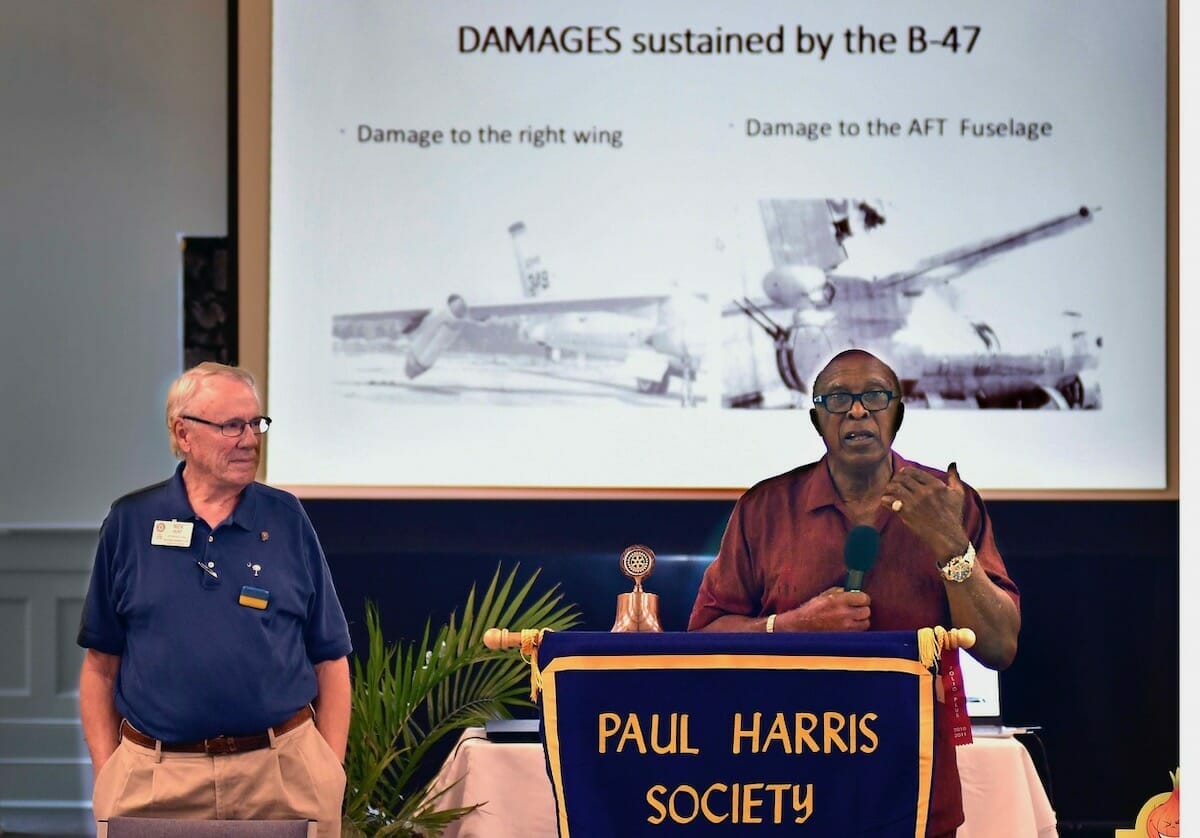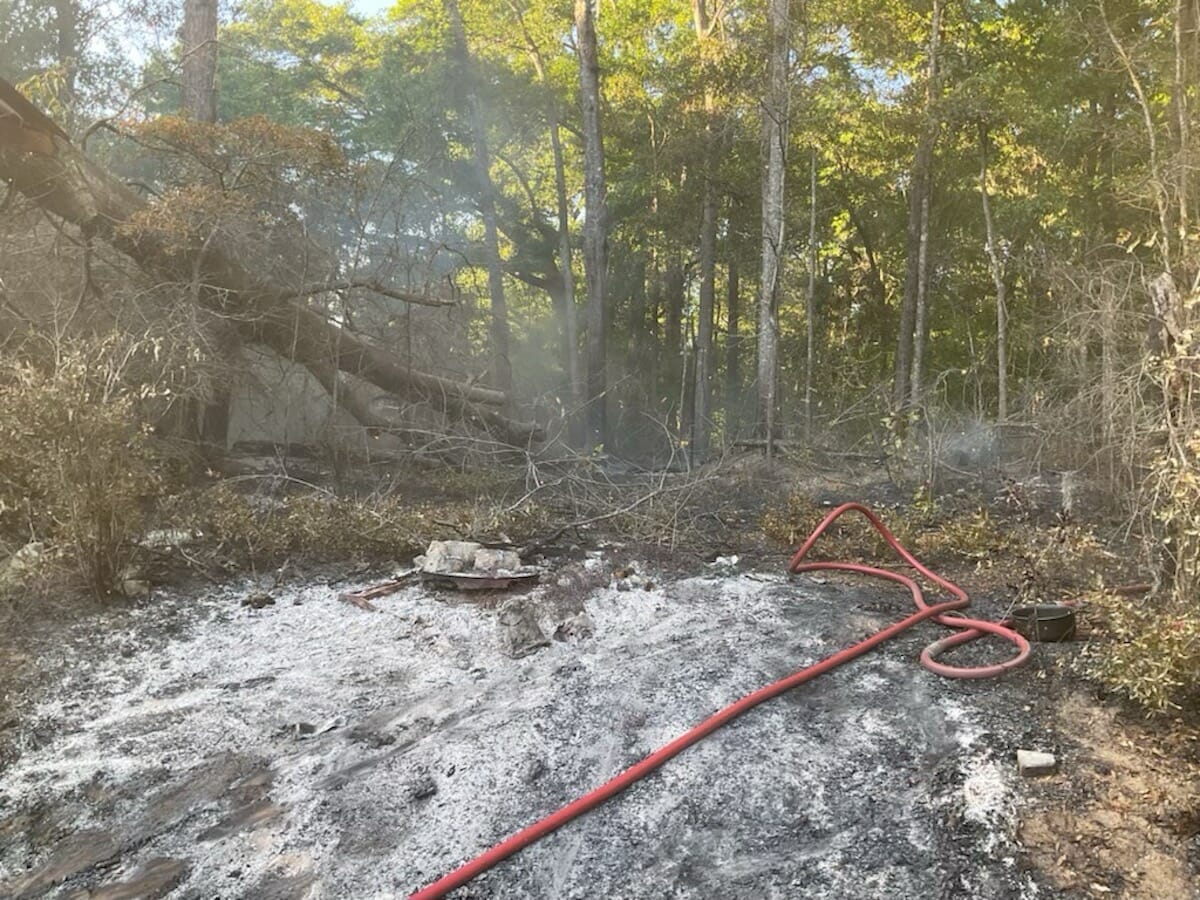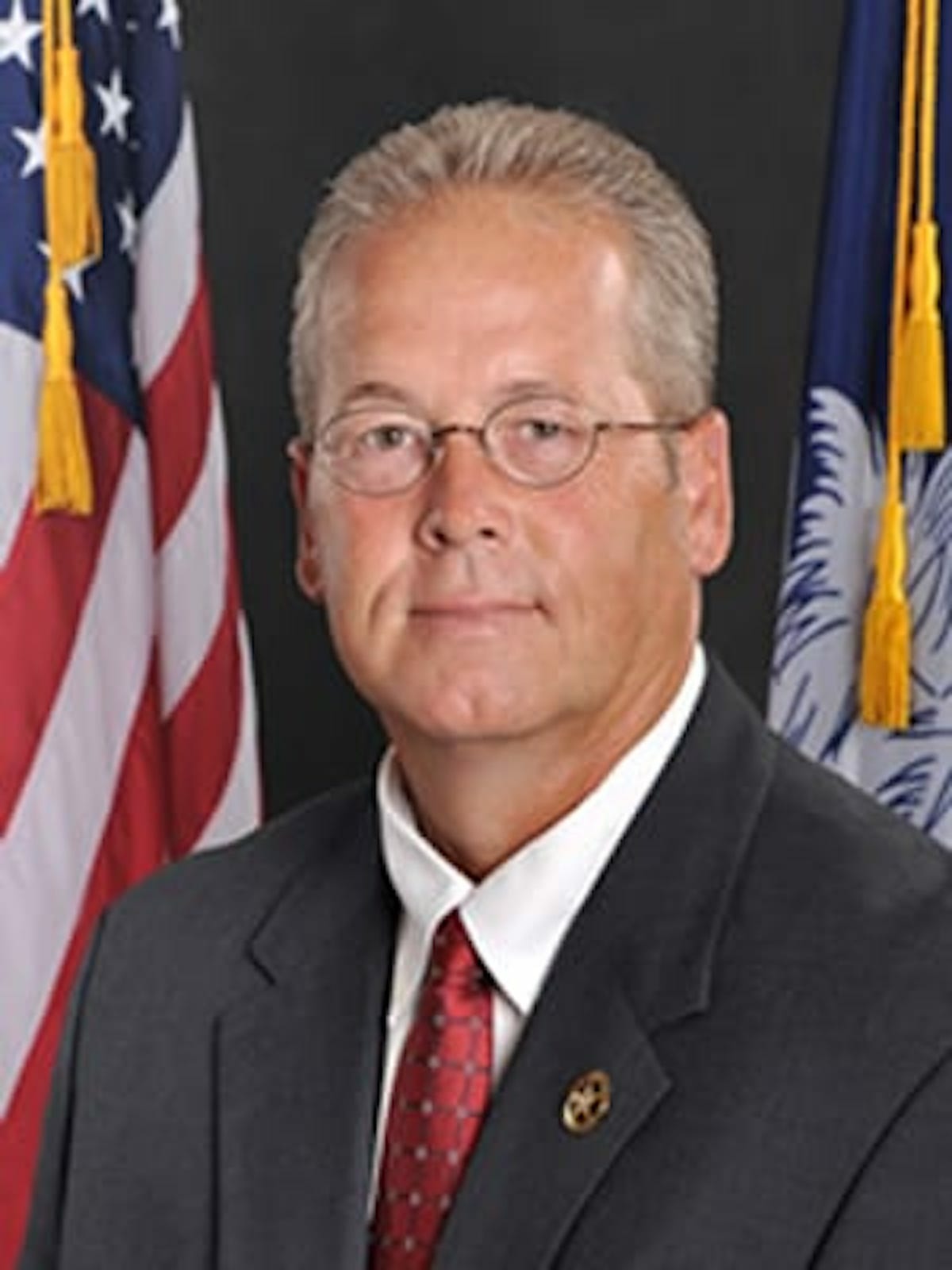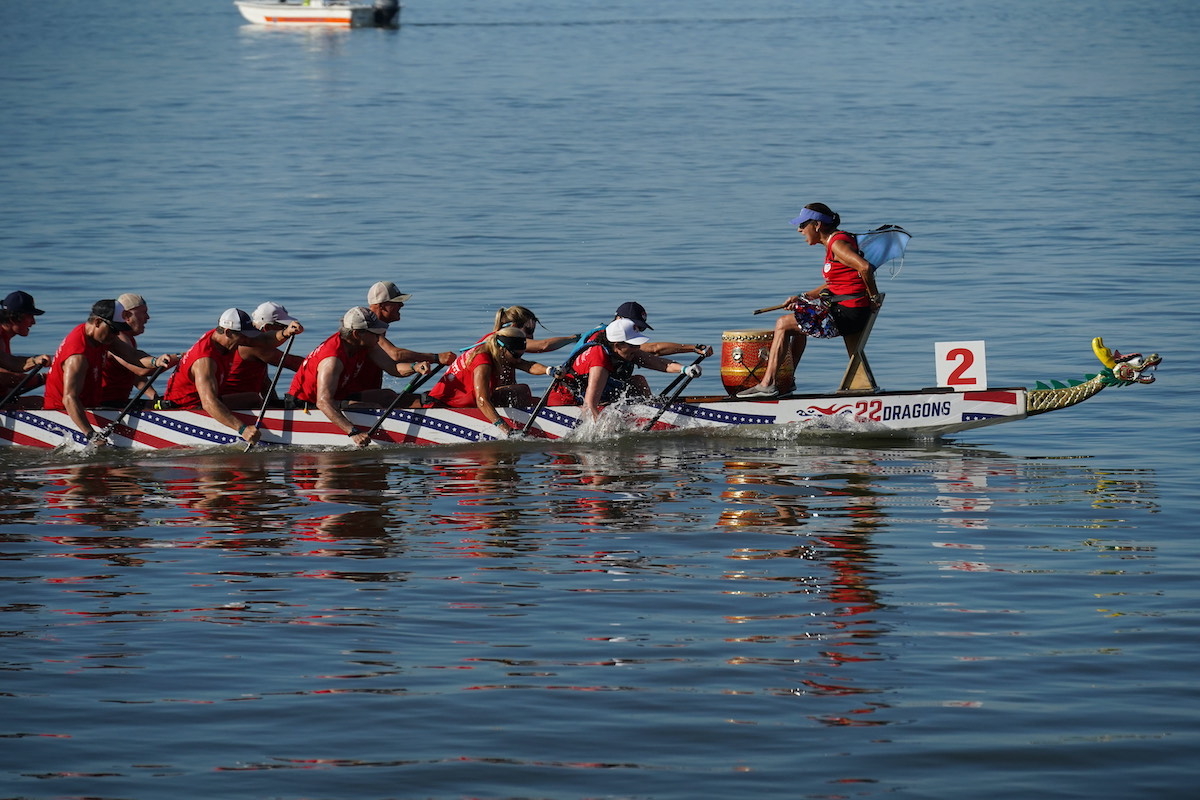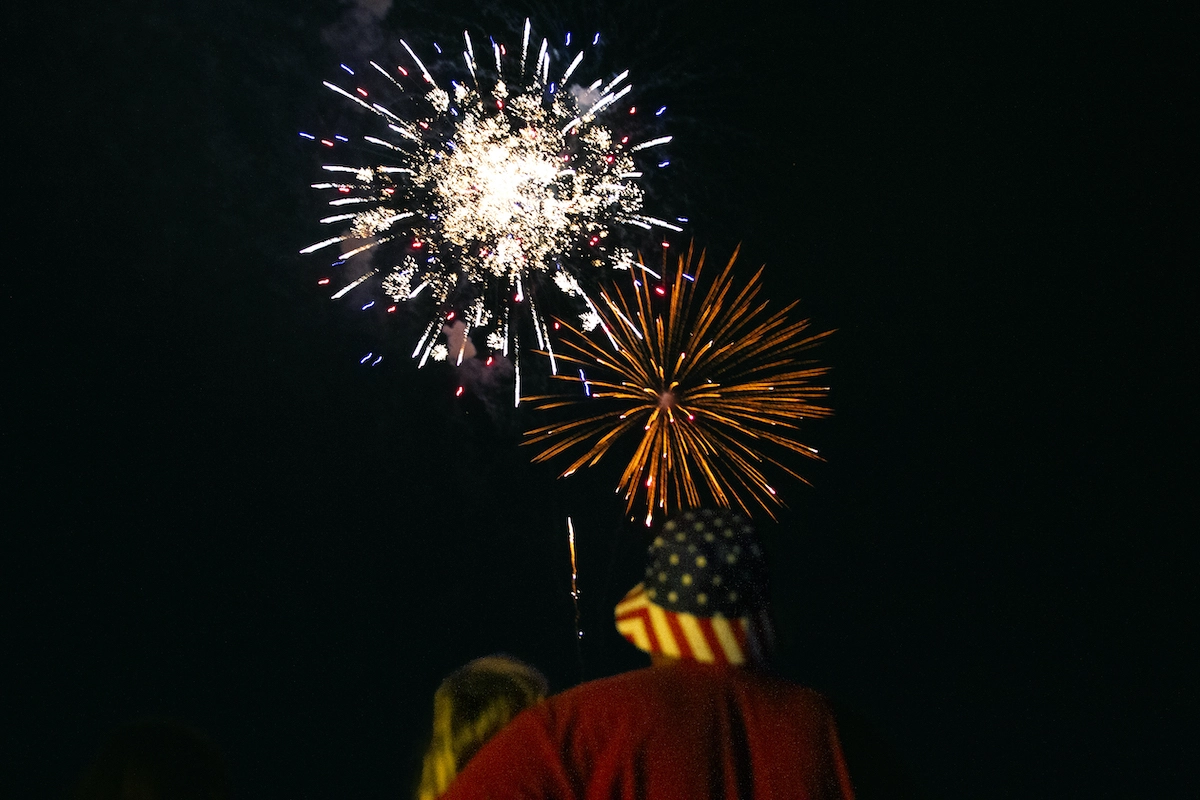Sidney Jones shares true story of a 1958 pilot rescue
By Tony Kukulich
When local businessman Nick Hunt took the podium during the May 11 Rotary Club of Beaufort meeting, he began to tell the story of the 1958 mid-air collision that resulted in a 7,600-pound hydrogen bomb being dropped off the coast of Tybee Island, Ga.
There’s no doubt that many, if not most, in the audience had at least a working knowledge of the incident, but Hunt was there to discuss a little-known facet of the story. For 64 years, the role of a man who played a critical role in the safe rescue of a pilot involved in the collision has been largely ignored. Hunt and his childhood friend, Sidney Jones, were there to tell the story of Pattamas James Jones, Sr.
Sidney was 11 years old and hunting racoons with his father, Pattamas, on a cold February night in 1958. Without a car or truck, they walked the few miles from their home in Garnett to the swamps that line the South Carolina side of Savannah River. Uncharacteristically, the pair lost their bearings in the swamp that night. They spent several hours trying to find their way out of the woods before beginning their walk home much later than usual.
That same night, a pair of B-47 Stratojet bombers took off on a training mission from Homestead Air Force Base located near Miami. Their mission took them toward New Orleans and then north to the Canadian border. They turned south and over Radford, Va., the crew dropped an electronic device that simulated a nuclear bomb drop. Their mission complete, the crews were cleared to return to Florida.
Along the bomber’s flight path, Air Force fighters would be scrambled on their own training flights to intercept the bombers.
“They had flown 2,000 miles in eight hours, and they were exhausted,” Hunt said. “After they released that electronic bomb in Virginia, they were headed back to Miami and did not realize they were going to be intercepted by any more fighter planes.”
Three F-86 Sabre fighters based in Charleston were ordered to intercept the flight. Ground radar detected only one of the two bombers, and radar onboard the Sabre piloted by Lt. Clarence Stewart also identified a single bomber.
Stewart was descending and lining up on the tail of the blip on his radar when, a few minutes after midnight, he came down on top of the second, undetected bomber at an altitude of about 38,000 feet.
The collision ripped both wings off the Sabre and Stewart ejected.
“His parachute was programmed to open at 12,000 feet, but he didn’t trust that, as I probably wouldn’t have either,” Hunt said. He immediately pulled the ripcord and floated down for 30 minutes in 40-below zero weather. … He came down in the swamp near my good friend’s house in Garnett.”
The B-47 suffered significant damage, but remained aloft. The bomber pilot, Maj. Howard Richardson, was directed to land at nearby Hunter Air Force Base. Richardson, concerned that a rough landing could rip the bomb from its mounting and kill the crew as it tore through the fuselage, requested permission to jettison it.
Without waiting to receive a reply, Richardson dropped the unarmed nuclear bomb off coast of Tybee Island. He managed to land the plane safely, and all three crew members survived. Richardson was awarded the Distinguished Flying Cross for his efforts that night. The bomb has never been found.
Sidney said that he and his father heard the collision around midnight, but didn’t see anything and weren’t sure what they had heard. Thirty minutes later and a short distance from home, the two heard Stewart yelling for help, and they heard his attempt to fire a flare gun. They had no idea the cries for help were coming from a downed pilot, and Pattamas had good reason not to rush into the darkness in response.
Stewart had landed in an area used to operate an illegal whiskey still.
“Back in the ‘50s, everything was kind of bad,” Sidney explained. “If you was Black, people would shoot you if you was trespassing. There’d be nothing to it. We rushed home and he said, ‘I’m going to get Andy Walker.’ He leaves. He has about a mile to walk. He didn’t have no car. He walked to Andy Walker and got him out of bed and brought him back. They went and found that it was Clarence Stewart.”
People have asked Sidney why he and Pattamas didn’t go directly to the man in distress.
“My daddy had a lot of sense because he had an 11-year-old kid with him,” Sidney said. “If he had taken me there and somebody had set up a trap or something, they would kill me and him. I thought he made a smart decision.”
Walker dropped Pattamas off at home and drove Stewart to the hospital. As a result, Walker, who was White, has generally received the credit for rescuing Stewart. Sidney believes that was because Pattamas was Black.
“All the newspapers put that Andy Walker found him,” Sidney said. “How’s he going to find him when he’s in his bed sleeping?”
A couple of years after the collision, Stewart stopped by the Jones’ Garnett home to thank Pattamas for his help that night. The downed pilot suffered severe frostbite on his hands that nearly resulted in their amputation. Stewart refused to allow that and eventually recovered. He went on to fly more than 100 combat missions in Vietnam, where he was awarded the Silver Star and Distinguished Flying Cross. Stewart married Patricia Ann Hudson of Beaufort in 1958.
Pattamas died in 2021. Sidney enjoyed a long and successful career as a wildlife officer with the South Carolina Department of Natural Resources. He is retired and is currently writing his autobiography. Sidney plans to include Pattamas’ story in his book.
Tony Kukulich is a recent transplant to the Lowcountry. A native of Wilmington, Del., he comes to The Island News from the San Francisco Bay Area where he spent seven years as a reporter and photographer for several publications. He can be reached at tony.theislandnews@gmail.com.


